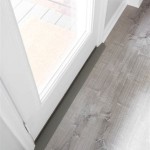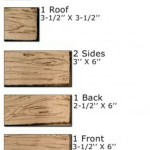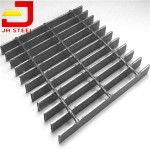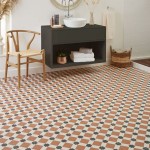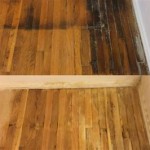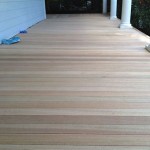Smart Carpet and Flooring: Revolutionizing Interior Spaces
Smart technology has rapidly infiltrated every aspect of modern life, influencing everything from appliances to vehicles. The integration of technology into interior design is also gaining momentum, with smart carpets and flooring emerging as a key area of innovation. This article will explore the functionality, applications, and potential benefits of smart carpets and flooring, highlighting the ways in which they are transforming our homes and commercial spaces.
Smart carpets and flooring represent a significant advancement beyond traditional materials. These innovative systems incorporate sensors, embedded technology, and interactive elements to provide users with a range of functionalities, from enhanced safety and security to improved comfort and energy efficiency. The development of these systems relies on advancements in materials science, microelectronics, and data analytics, allowing for the creation of flooring solutions that are not only aesthetically pleasing but also intelligent and responsive.
Understanding the Core Technologies
Several core technologies form the foundation of smart carpets and flooring. These technologies work in concert to enable the advanced features and functionalities that characterize these innovative floor coverings. Understanding these underlying technologies is essential for appreciating the potential and limitations of smart carpets and flooring systems.
One key technology is the integration of sensors. These sensors can detect a variety of parameters, including pressure, temperature, moisture, and motion. Pressure sensors, for example, can be used to detect the presence of individuals in a room, enabling automated lighting and heating adjustments. Temperature sensors can monitor floor temperature to optimize heating efficiency and prevent overheating. Moisture sensors can detect leaks and spills, providing early warnings to prevent water damage. Motion sensors can track movement patterns, which can be useful for security purposes or for monitoring the activity of elderly individuals.
Another crucial component is the embedded electronic circuitry. This circuitry is responsible for processing the data collected by the sensors and transmitting it to a central control system. The circuitry is typically designed to be discreet and unobtrusive, often integrated directly into the carpet fibers or flooring material. Wireless communication protocols, such as Bluetooth or Wi-Fi, are often used to transmit data, allowing for seamless integration with existing smart home systems.
Powering these systems requires innovative solutions. Traditional power sources, such as batteries, can be impractical due to their limited lifespan and the need for regular replacement. Energy harvesting technologies offer a promising alternative. These technologies capture energy from the environment, such as kinetic energy from foot traffic or solar energy from ambient light, and convert it into electricity to power the sensors and circuitry. This eliminates the need for external power sources and ensures the long-term sustainability of the system.
Data analytics plays a critical role in transforming raw sensor data into valuable insights. Sophisticated algorithms analyze the data to identify patterns, trends, and anomalies. This information can be used to optimize energy consumption, improve safety and security, and enhance the overall user experience. For example, data analytics can be used to predict when a fall is likely to occur, allowing for timely intervention. It can also be used to identify areas of high traffic, allowing for targeted cleaning and maintenance.
Applications Across Diverse Environments
The applications of smart carpets and flooring are diverse and span a wide range of environments, from residential homes to commercial buildings and healthcare facilities. The versatility of these systems allows them to be tailored to meet the specific needs of different user groups and environments.
In residential settings, smart carpets and flooring can enhance comfort, safety, and convenience. Imagine a carpet that automatically adjusts the lighting and temperature based on your location in the room. Or a floor that alerts you when a child gets out of bed at night. Smart carpets can also be used to monitor the health and well-being of elderly individuals, providing alerts to caregivers in the event of a fall or other emergency. These features can provide peace of mind and improve the quality of life for residents.
Commercial buildings can benefit from smart carpets and flooring in several ways. Energy efficiency is a major concern for many businesses, and smart flooring can help to reduce energy consumption by automatically adjusting lighting and HVAC systems based on occupancy. Security is another important consideration, and smart flooring can be used to detect unauthorized access and track movement patterns. In retail environments, smart carpets can provide valuable data on customer behavior, allowing retailers to optimize store layouts and marketing strategies.
Healthcare facilities can leverage smart carpets and flooring to improve patient safety and staff efficiency. Fall detection is a critical concern in hospitals and nursing homes, and smart flooring can provide early warnings to prevent falls and minimize injuries. Patient monitoring is another important application, as smart carpets can track patient movement and detect signs of distress. In operating rooms, smart flooring can be used to monitor temperature and humidity, ensuring a sterile and comfortable environment for surgeons and patients. Additionally, the pressure sensing capabilities can alert medical personnel to patients who have been lying still for too long, potentially preventing pressure sores.
Beyond these applications, smart carpets and flooring have the potential to be used in a variety of other settings, including schools, libraries, and museums. In schools, smart flooring can be used to monitor student activity and ensure their safety. In libraries, smart carpets can help to manage traffic flow and prevent noise. In museums, smart flooring can provide interactive exhibits and guide visitors through the collection.
Benefits and Challenges
The adoption of smart carpets and flooring offers numerous potential benefits, but it also presents certain challenges that must be addressed to ensure widespread acceptance and successful implementation. A thorough understanding of both the advantages and disadvantages is crucial for making informed decisions about the use of these innovative systems.
One of the primary benefits of smart carpets and flooring is enhanced safety and security. The ability to detect falls, monitor movement patterns, and detect unauthorized access can significantly improve the safety and security of individuals and properties. This is particularly beneficial in residential settings with elderly residents or young children, as well as in commercial buildings with high security requirements.
Improved energy efficiency is another key advantage. By automatically adjusting lighting, heating, and cooling systems based on occupancy, smart carpets and flooring can significantly reduce energy consumption and lower utility bills. This is particularly important in large commercial buildings, where energy costs can be a major expense. The benefits extend beyond cost savings to include reducing the environmental footprint by lowering overall energy consumption.
Enhanced comfort and convenience are also significant benefits. The ability to customize lighting, temperature, and other environmental parameters based on individual preferences can create a more comfortable and enjoyable living or working environment. The automated features of smart carpets and flooring can also simplify everyday tasks and reduce the need for manual adjustments.
Despite these benefits, several challenges must be overcome to ensure the widespread adoption of smart carpets and flooring. Cost is a major barrier, as the initial investment in these systems can be significantly higher than traditional flooring options. However, the long-term cost savings associated with reduced energy consumption and improved safety may outweigh the initial investment in some cases.
Installation and maintenance are also important considerations. Smart carpets and flooring require specialized installation procedures and may require regular maintenance to ensure optimal performance. It is essential to work with qualified professionals to ensure proper installation and maintenance to avoid potential problems. The complexity of the systems also mean that troubleshooting might require specialized expertise.
Data privacy and security are also critical concerns. Smart carpets and flooring collect a significant amount of data about the occupants of a building, including their location, movement patterns, and activities. It is essential to implement robust security measures to protect this data from unauthorized access and misuse. Clear and transparent data privacy policies are also crucial to build trust and ensure that users are comfortable with the collection and use of their data.
Durability and longevity are also important considerations. Carpets and flooring are subjected to a significant amount of wear and tear, and it is essential that smart carpets and flooring are designed to withstand these conditions. The embedded sensors and circuitry must be protected from damage, and the materials used must be durable and long-lasting. The lifespan of the technology components also needs to be considered when evaluating the overall cost-effectiveness.
Aesthetic integration is another challenge. Smart carpets and flooring must be aesthetically pleasing and seamlessly integrated into the overall design of the space. The embedded sensors and circuitry should be discreet and unobtrusive, and the materials used should complement the existing decor. This requires careful consideration of design and materials selection to ensure that the smart features do not detract from the overall aesthetic appeal.
The development and adoption of standards is crucial for ensuring interoperability and compatibility between different smart carpet and flooring systems. Standards can also help to ensure that these systems are safe and reliable. Industry collaboration and regulatory oversight are needed to develop and enforce these standards.

Smart Carpet And Flooring Reopens After State Wide Quarantine Offering At Home Ping Options With Mobile Showroom

Smart Carpet And Flooring

Smart Carpet And Flooring

Smart Carpet And Flooring Linkedin

Smart Carpet And Flooring Linkedin

Smart Carpet And Flooring Updated May 2024 373 Photos 93 Reviews 1913 Atlantic Ave Manasquan New Jersey Carpeting Phone Number Yelp

Smart Carpet And Flooring Celebrates 25th Anniversary As Tri State Leader Over Two Decades Of Excellence Still Counting

Summer Time For Pool Parties Barbecues And Waterproof Flooring 2024 06 13 Floor Trends Installation

Smart Carpet Living Room Transitional New York By And Flooring Houzz Ie

Smart Carpet And Flooring Updated May 2024 373 Photos 93 Reviews 1913 Atlantic Ave Manasquan New Jersey Carpeting Phone Number Yelp
Related Posts

